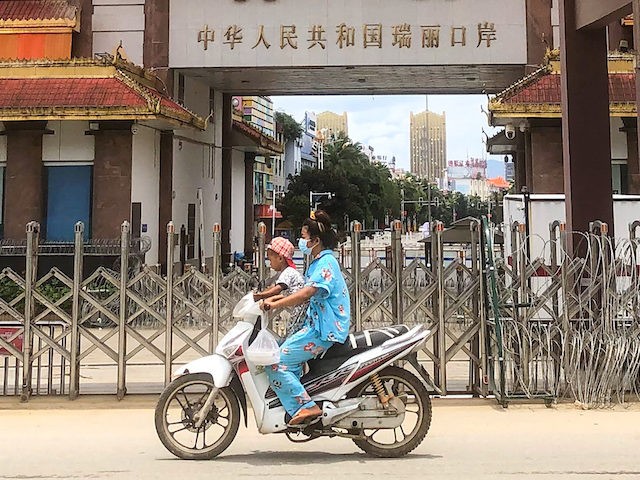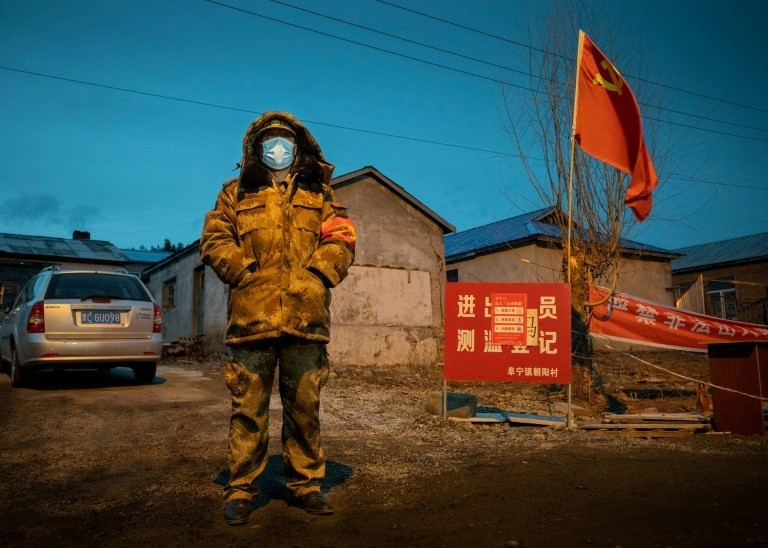While the world’s attention is focused on Shanghai after four weeks of an insanely harsh coronavirus lockdown, a viral video produced this week documented some 30 million residents of smaller Chinese cities living under comparably hideous conditions.
Radio Free Asia (RFA) on Tuesday described the video as focused on the unfortunate town of Ruili, a trading hub on the border between China and Myanmar that has been locked down nine times since the pandemic began:
“It’s true that the economy here is no good,” [hotel employee] Yang said. “The city is often locked down because of the pandemic, and most of the traders have gone to other nearby cities like Longchuan, Pingjiang and Tengchong.”
Yang said he would like to leave too, but is currently on a seven-day mandatory quarantine at home, and will need a negative PCR test before he can leave.
A second Ruili resident said the border with Myanmar remains closed, with low occupancy rates in hotels. Asked about locals, the resident replied simply: “Everyone’s gone.”
Other towns such as Suifenhe and Dongxing, located on China’s borders with Russia and Vietnam respectively, have been given similar treatment. RFA’s correspondents speculated lockdowns have been frequent and harsh in border towns because the Chinese Communist government wants to reinforce its political narrative that all coronavirus outbreaks originate in foreign countries.
While international attention has focused on the harsh COVID-19 restrictions in Shanghai, as many as 30 million people across China have been living under similar measures for weeks due to President Xi Jinping’s zero-COVID policy. https://t.co/pO0pNCi2LJ
— Radio Free Asia (@RadioFreeAsia) April 26, 2022
RFA scoured Chinese media and found lockdowns have been imposed on “dozens of smaller towns and cities” across China, plus some larger cities further from the borders, imprisoning over 30 million people in addition to Shanghai’s massive population of 26 million.
Details of the restrictions vary, but school and business shutdowns, blocked roads, and restrictions on when citizens are permitted to leave their homes are common features.
All of the locked-down cities are also under heavy censorship orders, including what appears to be a nationwide Communist Party directive to suppress a video of harsh conditions in Shanghai called “Voices of April” that began circulating last week.
“Firstly, smaller and medium-sized cities don’t get much public attention anyway, and secondly, local governments may wield stronger control over content like that, so it’s hard for discontent to spread,” U.S.-based China commentator Tang Jingyuan told RFA to explain the dearth of media coverage for any lockdown besides Shanghai’s.
A new high-profile death in Shanghai was downplayed by Chinese state media on Tuesday, the passing of aircraft engineer Meng Qinggong, deputy chief designer of the CR929 wide-body passenger plane developed with Russia.
State-controlled media saluted Meng for his “outstanding” Communist Party membership and applauded his efforts to administer coronavirus tests to his Shanghai residential compound during the lockdown, but failed to mention precisely why he died at the age of 43.
RFA quoted local media reports that Meng suffered a heart attack and “died after a long wait for an ambulance, which was hampered by current lockdown restrictions and couldn’t reach him in time.”
Shanghai might finally see light at the end of the tunnel after a few days of declining coronavirus test results, but residents of Beijing are nervously watching the capital city undergo the same multi-round mass testing that preceded the Shanghai horror.
Beijing officials on Tuesday sought to reassure residents that mass testing could make a lockdown unnecessary, and if one is imposed, Beijing is better provisioned to withstand weeks of citywide house arrest than Shanghai was. Some districts of Beijing appear to be preemptively locking themselves down, leaving streets, shops, and restaurants deserted as residents stay home.


COMMENTS
Please let us know if you're having issues with commenting.